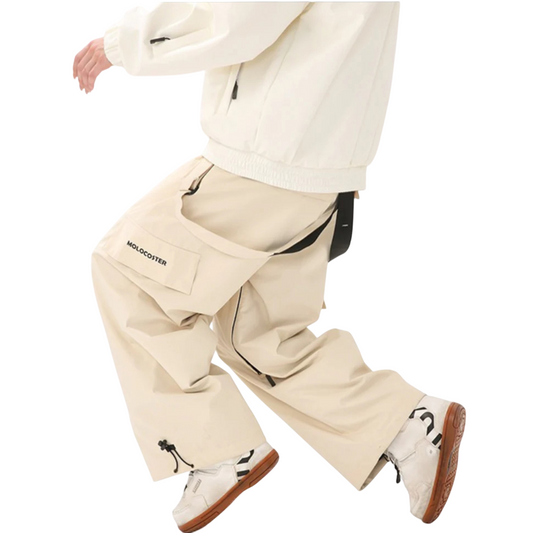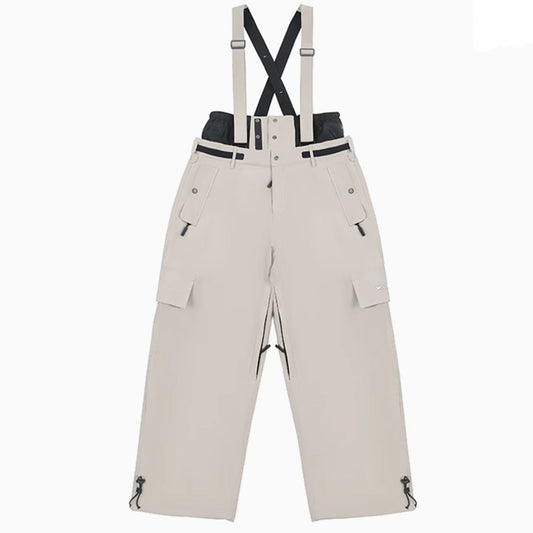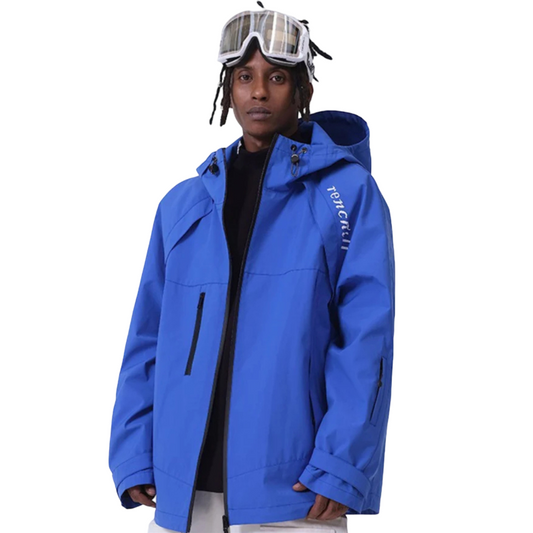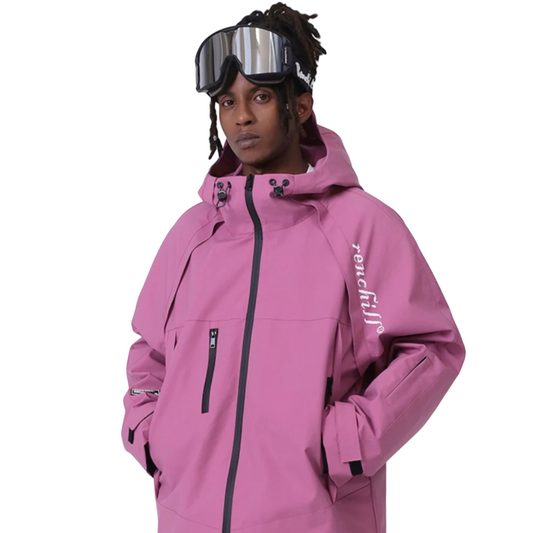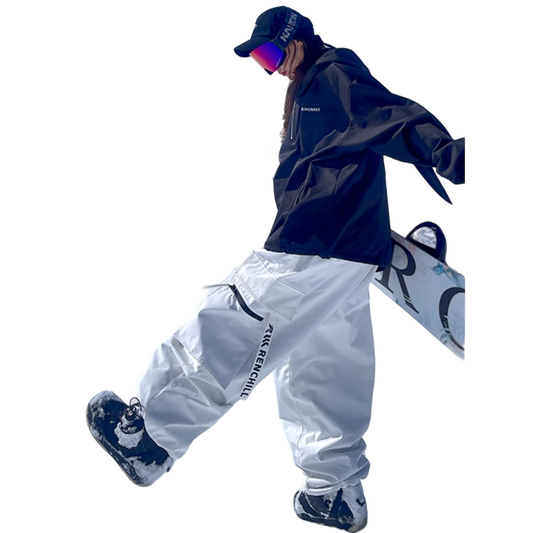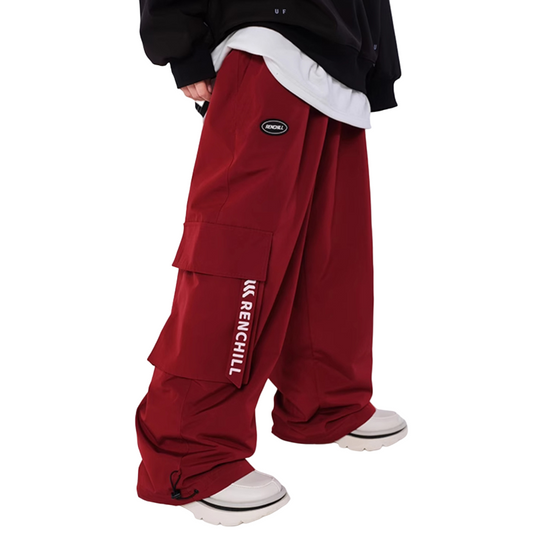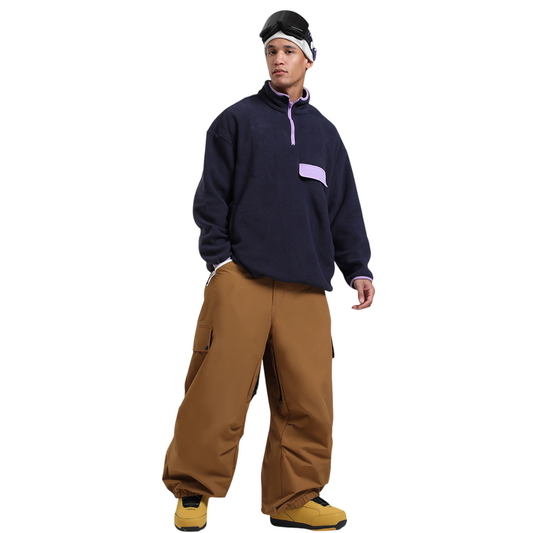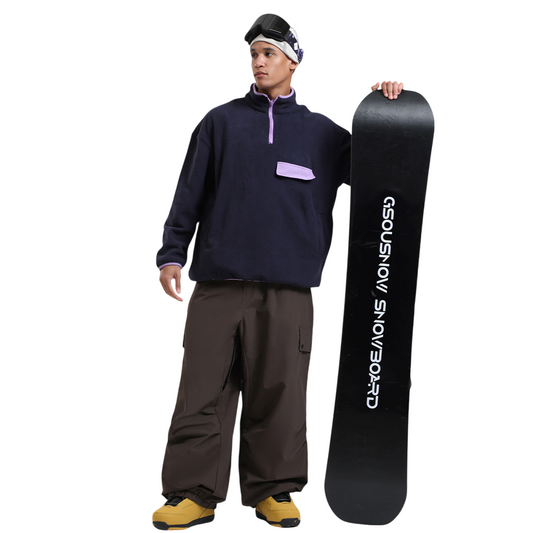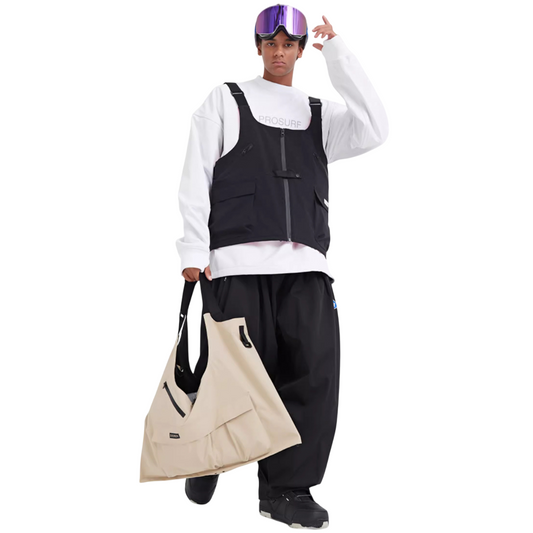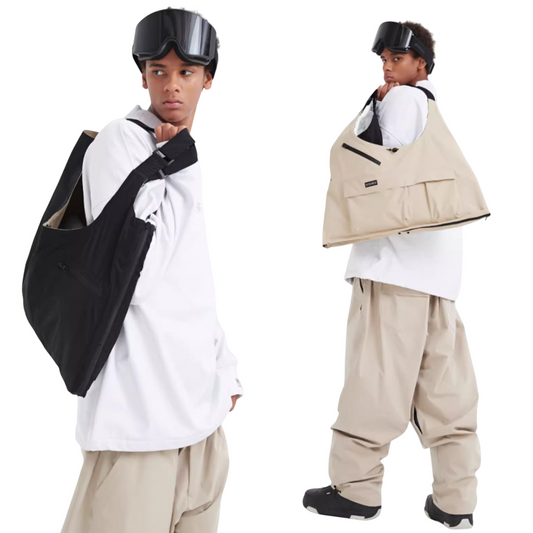You want snow vests for men that deliver warmth, mobility, and versatility. Many users praise down or synthetic vests for core warmth during cold days. Some prefer vests with hybrid performance for winter sports. The chart below shows how modern vests balance warmth and mobility:

SNOWMOCACA Ski Vest stands out for its all-around performance. You get free shipping on orders over $99. ❄️
|
Vest Name |
Total Weight (oz) |
Down Fill Weight (oz) |
Percent Fill Weight |
Down Fill Power |
Fabric Type |
Key Benefit Highlighted |
|---|---|---|---|---|---|---|
|
Zpacks Goose Down Vest |
4.2 |
1.9 |
45.2% |
900 |
7d Ventum Ripstop Nylon |
Highest warmth-to-weight ratio, ultralight, core warmth with minimal bulk, enhancing mobility |
|
Rab Mythic Down Vest |
5.8 |
2.1 (incl. PrimaLoft) |
36.2% |
900 |
10d recycled Pertex Quantum |
Hybrid insulation improves moisture resistance and performance under pack straps, enhancing versatility |
|
Feathered Friends Helios |
10.2 |
4.8 |
48% |
900 |
20d Pertex Quantum (60% biobased), 20d recycled nylon liner |
Very high warmth-to-weight ratio, can replace a jacket, superior core warmth but heavier and bulkier |
Key Takeaways
- Down vests offer the best warmth-to-weight ratio and pack small, making them ideal for cold, dry days, but need to stay dry to keep their warmth.
- Synthetic vests keep you warm even when wet, dry quickly, and work well for active or damp conditions, offering good breathability and easy care.
- Choose your vest based on activity and weather: down for dry cold, synthetic for wet or active days, and hybrid vests for versatile performance in mixed conditions.
Snow Vests for Men: Types
When you look for snow vests for men, you will find several main insulation types. Each type offers unique benefits for warmth, mobility, and weather protection. The table below compares the most common vests by insulation, weather resistance, and use case:
|
Type of Snow Vest |
Insulation Material |
Insulation Characteristics |
Weather Resistance |
Breathability |
Warmth-to-Weight Ratio |
Typical Use Case |
|---|---|---|---|---|---|---|
|
Down Vests |
Down (e.g., 800 fill power) |
High loft, compressible, best warmth-to-weight |
Needs coating, loses warmth when wet |
Less breathable |
Excellent |
Cold, dry days, lightweight warmth |
|
Synthetic Vests |
Synthetic insulation (e.g., Primaloft Gold) |
Retains warmth when wet, less compressible |
Great in wet weather |
More breathable |
Good |
Active use, damp conditions |
|
Hybrid Vests |
Down + synthetic |
Mixes warmth and moisture resistance |
Balanced |
Improved |
Balanced |
Versatile, mixed activities |
Down Vests
You get the best warmth-to-weight ratio with down vests. Down insulation traps heat well and packs down small. These vests work best in cold, dry weather. If you want lightweight warmth for less active days, down is a top choice. However, down loses insulation power when wet, so you need to keep these vests dry.
Synthetic Vests
Synthetic vests use synthetic insulation like Primaloft. These vests keep you warm even if they get wet. Synthetic insulation dries fast and resists damage better than down. You will find synthetic vests more breathable, making them great for skiing or snowboarding. Synthetic vests also cost less and last longer in rough conditions.
Fleece Vests
Fleece vests use polyester fleece for insulation. These vests wick moisture away from your body and dry quickly. Fleece vests work well as mid-layers for active winter sports. You get excellent breathability and comfort, but less wind and water resistance compared to down or synthetic vests.
Softshell & Hybrid Vests
Softshell and hybrid vests combine different insulation types. You get down in the chest for warmth and synthetic under the arms for moisture control. Softshell fabrics add stretch and weather resistance. These vests give you flexibility and protection for winter sports. You can move freely and stay comfortable in changing weather.
Tip: Choose insulated vests based on your activity level and the weather. Down works best for dry cold, synthetic for wet or active days, and hybrids for versatility.
Best Overall Vest: SNOWMOCACA Ski Vest
User Favorites
You want a vest that delivers reliable warmth, strong performance, and lasting quality. Many users choose the SNOWMOCACA Ski Vest as the best overall vest because it checks all these boxes. You get down insulation that traps heat and keeps your core warm on the coldest days. The vest uses high-quality down, which gives you a great warmth-to-weight ratio. You can wear it alone or layer it under a shell for extra protection.
Users often mention the comfort of the SNOWMOCACA Ski Vest. The fit feels snug but not tight, so you can move freely during winter sports. The vest uses a soft lining that feels good against your skin. You also get synthetic panels in key areas, which boost breathability and help manage sweat. This combination of down and synthetic insulation gives you versatile performance in changing weather.
You will notice the vest’s durability right away. The outer fabric resists tears and stands up to rough use. Many users say the vest keeps its shape and quality after many washes. You can toss it in the washing machine, which makes care easy. The zippers and pockets feel sturdy, and you get enough storage for your essentials.
The SNOWMOCACA Ski Vest works well for skiing, snowboarding, hiking, and travel. You can pack it down small, so it fits in your bag. The vest’s quality construction means you get reliable warmth and performance year after year. Many users call it one of the best vests for both active use and casual wear.
Note: You get FREE SHIPPING on orders over $99, making this vest an even better value.
User Complaints
Some users wish the SNOWMOCACA Ski Vest had a more modern style. The design looks classic, but a few people want bolder colors or a slimmer cut. You might find the price higher than some other vests, especially if you compare it to basic synthetic options. However, most users agree that the quality and performance justify the cost.
A few users mention that the down insulation can shift after heavy use, which may create cold spots. You can fix this by fluffing the vest or washing it with care. Some people also say the vest feels bulky when you layer it under a tight shell. If you want a super-light vest, you might prefer a thinner synthetic model.
You may notice that the vest’s warmth can feel too much during high-output activities. The down and synthetic blend gives you great insulation, but it may trap heat if you work hard on the slopes. Some users suggest opening the zippers or wearing lighter layers underneath to manage warmth.
Overall, the SNOWMOCACA Ski Vest stands out for its warmth, comfort, durability, and quality. You get versatile performance for many winter activities. While some users want style updates or a lower price, most agree this is the best overall vest for serious winter use.
Down Vests: Pros and Cons
Pros
You will notice that down vests stand out for their impressive warmth and lightweight feel. Many people choose these vests because they deliver the best insulation-to-weight ratio. When you wear a down vest, you get exceptional warmth without feeling weighed down. The high loft clusters in down insulation trap air efficiently, keeping your core warm even on the coldest days. Most down vests pack down small, so you can easily carry them in your bag or backpack. This makes them perfect for travel or outdoor adventures.
- Down vests offer high compressibility, so you can stuff them into tight spaces.
- Higher fill power, such as 800 or 900, means better warmth with less weight.
- Goose down usually provides more warmth than duck down, making it a top choice for premium vests.
- Some down vests use a Durable Water Repellent (DWR) treatment, which helps resist light moisture and keeps the insulation working longer.
- Proper fit allows the down to loft fully, maximizing insulation and warmth.
If you want a puffer vest that keeps you warm in dry, cold weather, down vests are hard to beat.
Cons
You should know that down vests have some drawbacks. Down loses its warmth when it gets wet, so these vests work best in dry conditions. Even with DWR treatment, heavy rain or snow can reduce the insulation’s effectiveness. Down vests also require careful maintenance. You need to wash them gently and dry them thoroughly to keep the loft and warmth at their best.
- Down vests cost more than most synthetic vests.
- If the down shifts inside the vest, you might get cold spots.
- Some people find down vests less breathable during high activity, which can lead to overheating.
- Down insulation is not ideal for wet or humid climates.
- You must store down vests loosely to avoid crushing the insulation.
When you choose a down vest, you get top-level warmth and comfort, but you need to care for it properly to enjoy all the benefits.
Synthetic Vests: Pros and Cons
Pros
Synthetic vests give you reliable warmth in many winter conditions. You get synthetic insulation that keeps you warm even when wet. This makes synthetic vests a smart choice for skiing, snowboarding, or hiking in damp weather. Synthetic insulation dries quickly and resists water better than down. You can wash these vests easily and use them for active sports. Synthetic vests often cost less than down vests, so you get good value for your money.
Synthetic insulation is vegan-friendly and does not use animal products. You will find that synthetic vests offer good breathability. The fibers move moisture away from your skin, keeping you dry and comfortable. Synthetic insulation works well for high-output activities because it manages sweat and heat. Many users like the comfort and fit of synthetic vests, especially with loose designs.
Tip: Synthetic vests use advance\d moisture management. Polyester fibers transport sweat away, helping you stay dry and cool during activity.
|
Performance Metric |
Description |
|---|---|
|
Spreading Speed |
Measures how fast moisture spreads on the fabric surface |
|
One-Way Transport Capacity |
Shows how well the vest moves moisture from the inside to the outside |
|
Overall Moisture Management Index |
Combines absorption, transport, and drying speed for total comfort |
Cons
Synthetic vests have some limits. Synthetic insulation needs more weight to match the warmth of down. You may notice that synthetic vests feel bulkier and heavier. The warmth does not last as long because synthetic insulation loses loft over time. You might need to replace these vests more often if you want top quality.
Synthetic insulation does not match the warmth-to-weight ratio of down. The durability of synthetic vests is lower, especially after many washes. Some users say the quality drops as the insulation breaks down. Synthetic vests can feel less soft and less compressible than down vests. If you want the highest warmth and long-term quality, down vests may suit you better.
Fleece Vests: Pros and Cons
Pros
You will find that fleece vests offer excellent comfort and light insulation for many winter activities. Fleece insulation traps body heat close to your skin, giving you steady warmth while staying lightweight. You can wear these vests as a mid-layer or on their own during mild winter days. The soft texture feels gentle against your skin, making fleece vests more comfortable than many wool or synthetic options. Fleece dries quickly if it gets damp, so you stay warm and dry during active use.
Lightweight fleece vests breathe well, which helps you avoid overheating when you move. You can pack them easily in your bag because they compress without losing shape. Different fleece weights let you balance insulation and breathability. Midweight fleece vests give you a good mix of warmth and comfort for most conditions.
|
Insulation Type |
Average Warmth-to-Weight Ratio (clo/oz./yd²) |
|---|---|
|
Fleece (all weights) |
0.09 |
|
Non-woven insulations |
0.42 |
|
Fleece jackets (example) |
0.03 |
|
Active insulation jackets (average) |
0.07 |

You will notice that fleece vests provide less warmth per ounce than down vests or synthetic insulation. However, you gain breathability and comfort, which is ideal for high-output activities.
Cons
- Fleece vests do not cover your arms, so you lose warmth in cold or wet weather.
- You will not get the same level of insulation as down vests, especially in freezing conditions.
- Many users say fleece vests work best as layering pieces under waterproof shells, not as outerwear.
- Fleece insulation absorbs water quickly and loses warmth when wet, unlike down or synthetic vests with water-resistant shells.
- You may find that fleece vests do not protect well against wind, so you need extra layers for full warmth.
- Some users doubt that fleece vests can handle a wide range of temperatures, especially compared to down vests or insulated jackets.
You should choose fleece vests for breathability and comfort during active use, but remember their limits in harsh winter weather.
Best Vest for Active Use
Features
When you look for the best vest for active use, you want a vest that supports your movement and keeps you comfortable. Mobility matters most for skiing, snowboarding, and cold-weather hiking. You need a vest with elasticity and flexibility. These features help you move your arms and torso without restriction. A full range of motion lets you reach, twist, and bend on the slopes or trails.
Breathability is another key feature. You sweat during high-energy activities. A vest with a porous mesh structure allows air to flow and moisture to escape. This keeps you dry and prevents discomfort. Some vests use antimicrobial materials to stop bacteria from growing, which helps you stay fresh during long days outside.
Layering is important for performance. You want a vest that fits well over a base layer and under a shell. Down vests give you warmth without much weight, making them easy to layer. Synthetic vests work well for layering, too, especially if you expect wet weather. Both types offer performance benefits, but down vests excel in dry, cold conditions. Performance outerwear often combines down and synthetic insulation for the best results.
Durability and construction quality also matter. Look for strong fabrics, taped seams, and water-resistant coatings. These features help your vest last through many seasons of cold-weather hiking and winter sports.
User Feedback
You can see what users value most in the table below. These metrics help you choose the best vest for active use:
|
Metric/Feature |
Description & Relevance to Active Use |
|---|---|
|
Breathability |
Keeps you dry during intense activity. Essential for comfort. |
|
Waterproof Ratings |
Protects against snow and wet conditions. Important for winter sports. |
|
Insulation Levels |
Balances warmth and mobility. Down (40-60g) is good for layering. |
|
Durability |
Withstands rough use. High-quality vests last longer. |
|
Weight |
Lighter vests improve mobility. Down vests offer warmth with less weight. |
|
Construction Quality |
Taped seams and DWR coatings boost performance and longevity. |
|
Fit and Features |
Allows layering and movement. Longer backs and big zippers help on slopes. |
Users often say that down vests give the best warmth for their weight. Synthetic vests get praise for handling wet weather and easy care. Layering with either type boosts performance in changing conditions. Many users pick vests that let them move freely and stay comfortable during cold-weather hiking or winter sports.
How to Choose Your Vest
Choosing the right snow vest can make a big difference in your cold-weather wardrobe. You want a vest that matches your needs for warmth, comfort, performance, and weather protection. The best insulated vests help you stay active and comfortable in winter. Use this guide to find the perfect fit for your lifestyle.
Fit & Comfort
Fit and comfort should be your top priorities. A vest that fits well lets you move easily and keeps insulation close to your body. You want enough room for layering, but not so much that cold air sneaks in. Down vests often feel lighter and softer, while synthetic vests can offer a snug fit with more stretch. Try on different sizes and styles to see what feels best for you.
Tip: Make sure the vest does not feel too tight. Proper fit allows down or synthetic insulation to loft fully, which boosts warmth and performance.
Comfort also depends on the lining and collar. Look for soft linings that do not itch. High collars add extra warmth and weather protection for your neck. Armholes should not rub or restrict movement. If you plan to wear your vest for long periods, comfort becomes even more important.
Layering & Versatility
Layering is the secret to staying warm and comfortable in changing weather. You want a vest that works as a warm layering piece over a base layer and under a shell. Down vests give you excellent warmth without much weight, making them easy to layer. Synthetic vests work well for layering, too, especially if you expect wet or active days.
Consumer studies show that real-world testing in mountains, towns, and trails helps people find the most versatile vests. You should look for vests that pack down small, so you can carry them in your bag. Hybrid vests combine down and synthetic insulation types for the best mix of warmth, breathability, and weather protection. Versatility means you can use your vest for skiing, hiking, travel, or just running errands.
- Down vests: Best for dry, cold days and lightweight layering.
- Synthetic vests: Great for wet weather and high-output activities.
- Hybrid vests: Offer balanced performance for mixed conditions.
You can layer these vests in many ways across different seasons and activities. The right vest adapts to your needs and keeps you comfortable all day.
Weather Protection
Weather protection is a key factor when you choose a snow vest. You want a vest that shields you from wind, snow, and light rain. Down vests need a water-resistant shell to keep the insulation dry. Synthetic vests keep you warm even when wet, so they work well in damp or unpredictable weather. Hybrid vests use both down and synthetic insulation to balance warmth and weather protection.
Look for features like Durable Water Repellent (DWR) coatings, windproof fabrics, and storm flaps over zippers. These details help block out the elements and boost performance. If you spend time outdoors in harsh weather, choose a vest with strong weather protection and high-quality insulation.
Note: Weather protection does not just mean staying dry. It also means keeping wind out and warmth in, so you stay comfortable during any winter activity.
Practical Features
Practical features can make your vest more useful and comfortable. You want pockets for your phone, keys, or snacks. Zippered pockets keep your items safe. Some vests have inside pockets for extra storage. Adjustable hems and armholes help you seal out cold air and improve fit.
Quantitative studies show that features like fit, motion suitability, and easy maintenance have a big impact on overall performance. You should check for strong zippers, reinforced seams, and easy-care materials. Machine-washable vests save you time and effort. Reflective details add safety for night use. Choose a vest with the features that match your activities and needs.
|
Key Decision Factor |
Description |
|---|---|
|
Warmth and Protection |
Essential for harsh weather, insulation keeps you comfortable and safe. |
|
Multifunctionality |
Versatile vests work for sports, travel, and daily wear. |
|
Style and Fashion Trends |
Choose a vest that fits your personal style and current trends. |
|
Sustainability |
Eco-friendly materials and ethical manufacturing matter to many buyers. |
|
Consumer Preferences |
Your lifestyle, travel habits, and fashion sense influence your choice. |
|
Comfort and Innovation |
Lightweight insulated vests offer warmth without bulk for better performance. |
When you think about how to choose your vest, remember to balance warmth, insulation types, layering, weather protection, and practical features. Your perfect vest will keep you warm, dry, and comfortable, no matter where winter takes you.
You see clear differences among snow vests for men. The table below highlights what real users love and hate about each type:
|
Model |
Insulation |
Weight (oz) |
Warmth |
Breathability |
Weather Resistance |
Price ($) |
Pros |
Cons |
|---|---|---|---|---|---|---|---|---|
|
Black Diamond First Light Hybrid |
Synthetic |
8.0 |
Moderate |
High |
Moderate |
195 |
Breathable, active use |
Heavy, less warm |
|
Outdoor Research Coldfront Down |
Down+Synth |
13.2 |
High |
Moderate |
Good |
179 |
Warmth, weather protection |
Bulky, heavy |
|
Rab Microlight Down |
Down |
N/A |
High |
Moderate |
High |
~30 less |
Weather-resistant, alpine use |
Heavier, less casual |
|
Arc’teryx Norvan Insulated |
Synthetic |
8.0 |
Moderate |
High |
Low |
N/A |
Lightweight, breathable |
Less wind-resistant, limited storage |
|
Patagonia Better Sweater Fleece |
Fleece |
13.9 |
Low |
Moderate |
Low |
119 |
Cozy, versatile |
Not for harsh weather |
|
Columbia Steens Mountain Fleece |
Fleece |
8.8 |
Low |
Moderate |
Low |
50 |
Affordable |
Not very warm, less durable |

You want the best vests for your needs. Choose down for maximum warmth and packability. Pick synthetic for wet or active days. Fleece works for layering and comfort. Always check fit, layering ability, and weather protection.
FAQ
How do you wash a snow vest without damaging it?
You should use cold water and a gentle cycle. Always close zippers and turn the vest inside out. Air dry for best results.
What is the best budget vest for winter sports?
You can find the best budget vest by comparing insulation, fit, and durability. Look for synthetic options that offer warmth and easy care.
Can you wear a snow vest as the best casual vest for daily use?
Yes, you can wear a snow vest as the best casual vest. Choose a style with a relaxed fit and neutral color for everyday comfort.







